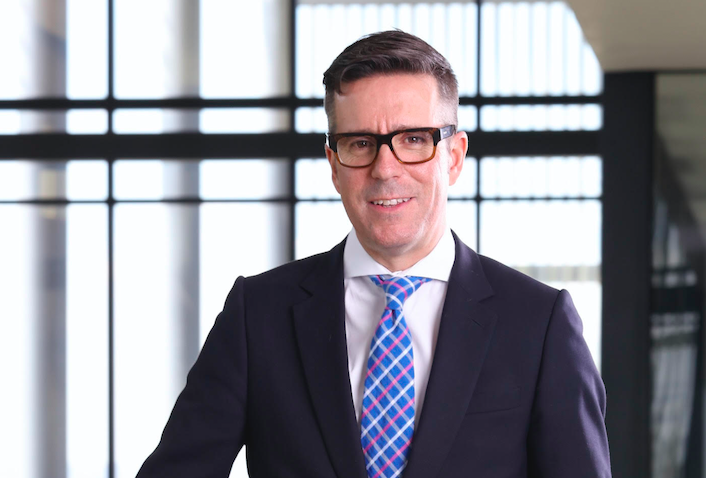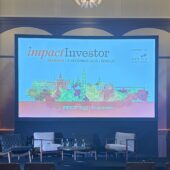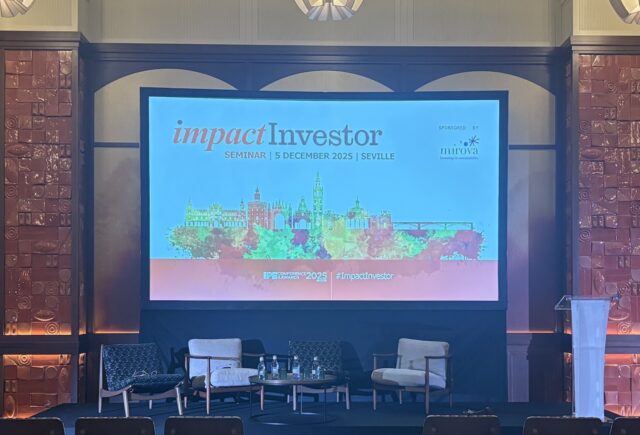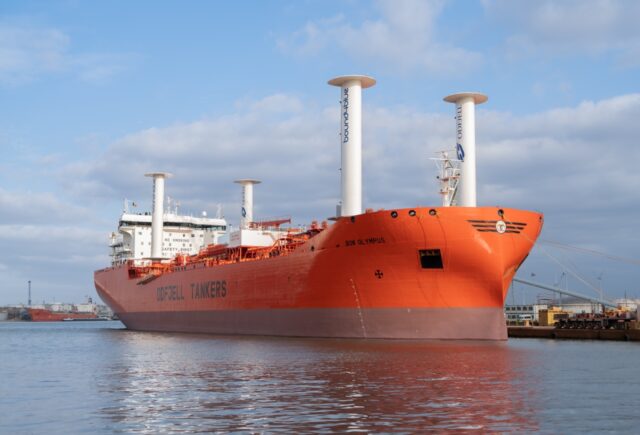Convergence Partners invests in better and cheaper internet access in Sub-Saharan Africa. “We treat a whole block in a township as if it’s a single home in a higher-income suburb”, says CEO Brandon Doyle on how to combine impact with financial profit.

In short
- Private equity investor Convergence Partners just announced the first close of its third fund, CPDIF, at $120mn.
- Convergence is spreading to more rural areas in Sub-Saharan Africa, having initially focused on the continent’s larger markets, notably South Africa.
- According to CEO Brandon Doyle, one way to scale and reduce risk in internet access investments is to invest in platforms that serve multiple countries.
The Johannesburg-based private equity firm has just announced the first close of its third fund, the Convergence Partners Digital Infrastructure Fund (CPDIF), at $120mn.
This is nearly halfway to a targeted size of $250mn. Convergence Partners (CP), which now has more than $400mn of capital under management, says it is the largest private equity investor dedicated to digital infrastructure in Africa.
The fund is focused on digital infrastructure, such as fibre and wireless connectivity, data centres in addition to investments in 5G, cloud, Internet of Things (IoT), Artificial Intelligence (AI), fintech and network virtualisation.
That this first round of CPDIF fundraising was specifically targeted at development finance institutions is partly a reflection of difficult times for the African private equity market – even before the impact of the Covid pandemic put a further damper on investment.
Not a good story
“The truth is that the African private equity story in the last few years hasn’t been a good one. There has been a lot of under-performance against original expectations in the market and all of the African private equity sector tends to have been painted with the same brush,” says Doyle, a co-founder of CP. “We are a tall poppy in the field, but there is still a limited audience that wants to talk to you.”
Nevertheless, CP has managed to attract financing from DFIs (National and international development finance institutions) that haven’t previously invested in its funds, such as the Development Finance Corporation of the US and Proparco, the private sector arm of Agence Française de Développement (AFD). Other investors include the UK’s CDC Group and the European Investment Bank (EIB).
With that platform of DFI investment to build on, CP hopes to open up the CPDIF to the wider investment community.

“As we move forward, with the future rounds we will be introducing more commercial money, pension funds, institutions, family offices, high-net worth, so it will be a combination,” Doyle says.
CPDIF made its first investment in February 2021 through the purchase of the African and Middle Eastern operations of data analytics business Ctrack from US firm Inseego. Doyle says CTrack’s vehicle fleet tracking business, cloud-based operations and data processing capabilities make it an ideal platform to develop IoT applications in Africa. CP hopes to roll out CTrack’s operations across the continent beyond the South African market, where it is currently focused.
Diversifying markets
CP has been diversifying its fields of operations, having initially focused on the low-hanging fruit of the continent’s larger markets, notably South Africa. Its controlling shareholder and chairman is veteran South African digital tech entrepreneur Andile Ngcaba.
The company helped break the stranglehold of monopoly players in South African internet provision by first investing in wholesale internet access via satellite and subsea cable, and then building city- to-city fibre-optic cables to compete with existing state-controlled infrastructure.
Since then it has invested in operations not only in other large economies, such as Nigeria and Kenya, but also less popular destinations for investment, such as Liberia, Togo and Mozambique.
In 2017 CP, Google, Mitsui and the IFC agreed to invest up to $100mn in CSquared, a Kenyan-based broadband infrastructure company, to fund the development of fibre networks in Uganda, Ghana, Liberia and elsewhere in sub-Saharan Africa.
“We are not fearful of investing in the smaller economies because we can bring wholesale fibre or enterprise solutions to those markets, generate a decent return, and still find local talent that we can upskill and develop,” Doyle says.
One platform – several countries
Scale and reduced risk can be achieved by investing in a platform that serves multiple countries, he says. One example of this is the model of inq, a CP-owned digital services provider present in Cameroon, Côte d’Ivoire, Nigeria, Zambia, Malawi, Botswana, Mozambique, and South Africa.
“Some of those markets are heavily underserved in terms of access to a quality enterprise solution, so by bringing that quality to the market, you can actually generate a large business on a platform basis. Then you’ve got access to a shared resource, and access to a shared balance sheet. It’s much easier to tackle those smaller markets from a group balance sheet than individually,” he says.
CP has just opened a new office in Lagos, Nigeria to help manage its growing West African portfolio. While market liberalisation has opened up a swathe of the continent to investment, some promising markets remain hard to crack. One example is Ethiopia, where the operations of independent telecom operators remain heavily restricted, Doyle says.
Reaching poorer communities
Many poor Africans are yet to reap the benefits of the digital transformation. The businesses in which Convergence Partners invests tend to develop in a hub and spoke manner, targeting the more affluent and more densely populated urban areas of big cities, where returns are highest.
Going further out, to smaller towns and rural areas, where incomes are lower and costs may be higher, is more of a challenge. But there are exceptions, according to Doyle: Vumatel, a South African fibre-internet-to-the-home company in which CP is an investor, has been able to roll out services in the country’s poor townships. Treating customer income in terms of aggregate spend, rather than individually, they have managed to average out payments risk across many customers.
“We treat a whole block in a township as if it’s a single home in a higher-income suburb. We sell the service to a local reseller and then they resell to the 20 homes in that block. The price point is well down, but the quality is still very high,” he says.
“You’re still getting a good return on your investment capital, and you’re solving a massive challenge of getting this uncapped fibre at an affordable price into the communities that need it most,” he adds.
Team up to de-risk
Getting high-speed internet services to rural areas is even more of a challenge. If it can be done, the impact in terms of livelihoods, social and economic mobility and education is huge for rural families whose only digital connectivity may be a basic mobile phone.
Doyle is enthusiastic about the work of small-scale local rural mobile network providers, who are increasingly teaming up with large mobile operators to de-risk their operations.
“The local companies build these networks with a big brother partner, but they work out the technology solution and the capex cost solution that can address those markets. Things like that are super interesting to us,” he says.
He also sees the potential for a digital services revolution for rural areas via 5G technologies that could permit low cost, high-speed broadband to reach more remote areas.
Own impact measurement tool
CP’s primary aim is to realise a return on its investment portfolio, but it also has a stated impact agenda.
Doyle argues that investing in ventures with high impact and lower financial returns is not incompatible with CP’s target of a 20%-plus return on investment for its fund portfolio. He says that a portfolio can be balanced in terms of high and low impact investments, in the same way as a portfolio is balanced to obtain an overall level of profitability.
CP uses a scoring process it calls Sira to assess investment impact, which it developed in-house because there were no suitable tools available. Doyle describes Sira as a digital inclusion tool, which takes into account factors such as whether rural customers receive sufficient education to be able to use technology and online services, and whether services are being provided at an affordable level.
Happy to share
The company does not make public the Sira scores for individual firms in which it invests, but is happy to share its underlying methodology with others to help achieve greater harmonisation of impact measurement across the global investment industry.
“The extent to which the industry is greenwashing and false reporting [on impact] is enormous. It’s crying out for some level of harmonisation,” Doyle says. “We need to get to something that everyone understands, and we’re not fixated on ours. If there’s a global standard out there, we’ll just shift to that.”
“But it’s what you actually do with the tool that’s important, in terms of driving the right behaviours within your teams and making sure that these sorts of discussions are front of mind for the boards of the companies investing.”






